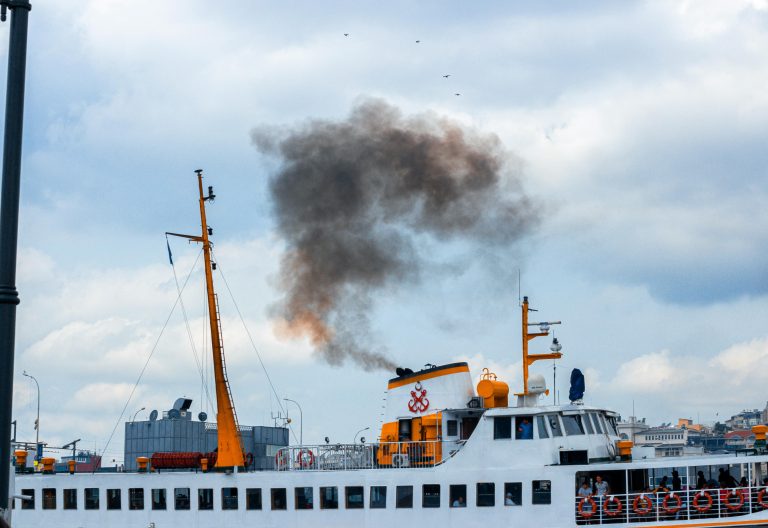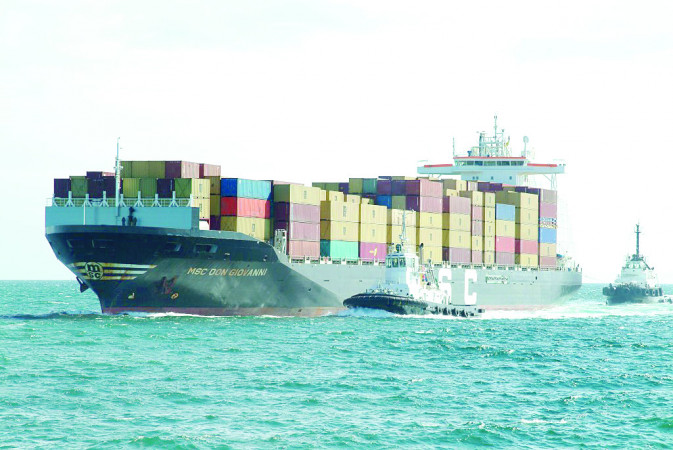Tough talks bear fruit as deal struck to cut ship emissions

After years of intense negotiations, countries have struck a landmark deal to cut greenhouse gas (GHG) emissions from global shipping, along with financial penalties for failing to meet the obligations.
In the deal reached last Friday in London, the countries agreed to set mandatory fuel standards and introduced an industry-wide carbon pricing mechanism.
The framework agreed during the United Nations International Maritime Organisation (IMO) Marine Environment Protection Committee, aims for net-zero emissions from the sector by 2050 and will be formally adopted in October before coming into force in 2027.
The IMO is the UN specialised agency responsible for the safety and security of global shipping and the prevention of marine and atmospheric pollution by ships.
Established in 1948 and headquartered in London, the organisation develops international treaties such as the International Convention for the Safety of Life at Sea (SOLAS) or the International Convention for the Prevention of Pollution from Ships (MARPOL).
New laws signed into the agreement will apply to large ocean-going vessels over 5,000 gross tonnage, which collectively account for 85 per cent of carbon dioxide emissions from the marine shipping fleet.
IMO Secretary-General Arsenio Dominguez hailed the breakthrough, emphasising the collaborative spirit that led to the deal.
“The approval of draft amendments to MARPOL Annex VI mandating the IMO net-zero framework represents another significant step in our collective efforts to combat climate change, to modernise shipping and demonstrates that IMO delivers on its mandate,” he said.
Challenging talks
MARPOL Annex VI refers to provisions in the International Convention for the Prevention of Pollution from Ships, specifically addressing air pollution. It already includes energy efficiency requirements for ships and has 108 parties covering roughly 97 per cent of the world’s merchant shipping fleet by tonnage.
Negotiations that culminated in the deal were particularly challenging, with around a dozen countries, including the US, opposed to the framework. The proposal was ultimately put to a vote at a contentious closing ceremony and passed.
Described as a turning point for the shipping industry, the framework introduces a dual approach: a global standard to progressively lower the annual GHG fuel intensity of marine fuels, and a GHG pricing mechanism requiring high-emitting ships to pay for their excess pollution.
Under the new system, ships that exceed emissions limits will need to acquire remedial units to offset their excess pollution. Meanwhile, vessels operating with zero or near-zero emissions will be eligible for financial rewards, creating a market-driven push toward cleaner maritime transport.
A key element of the new framework is the IMO Net-Zero Fund, which will collect revenues from the carbon pricing mechanism. These funds will support innovation, research, infrastructure and transition initiatives in developing countries.
The legally-binding framework will also be used to mitigate negative impacts on vulnerable nations, such as small island developing states and least developed countries, which bear the brunt and burden of both climate change and economic pressures in the shipping sector.
Next steps for the new laws involve adoption and implementation. The draft regulations will undergo formal adoption in October 2025, with some technical details still to be resolved. The measures will enter into force in 2027, giving the industry time to adapt to new requirements and invest in alternative fuels and technologies.
Under the agreement, ship owners who fail to reduce emissions intensity by 30 per cent by 2035 will have to pay into a net zero fund to clean up shipping through green fuels.
After the week-long talks at the IMO headquarters in London, governments agreed on a set of annual emissions reduction targets for 2028 to 2035, along with the financial penalties to be imposed for failing to meet them.
At the contentious closing ceremony last Friday, where some fossil fuel-producing nations opposed the measures, the governments also fixed annual targets for each year between 2028 and 2035. Targets for the 2035-2040 period will be decided in 2032.
Governments already agreed back in 2023 to reach net-zero “by or around close to 2050” – and last week’s talks were key to working out how to get there by adopting greener fuels and energy efficiency.
Funding transition
Ship owners who fail to meet the “base” targets on the path to achieving a 30 per cent reduction by 2035 will have to buy “remedial units” from the IMO to make up the difference, priced at US$380 a tonne of carbon dioxide equivalent, reports the authoritative UK-based Climate Home News digital publication’s news editor Joe Lo.
Lo says the IMO will spend the money through a new Net Zero Fund on cleaning up the maritime sector, helping workers through the green transition and compensating for any negative impacts of that transition on developing economies, such as increases in the price of food due to higher shipping costs.
“No money raised from selling remedial units will be spent outside the maritime sector, disappointing climate activists and some governments which had hoped the money could generate tens of dollar billions per year in broader climate finance,” notes Lo.
On top of these base targets, governments have set additional compliance targets that are harder to meet and would deliver a more ambitious reduction in emissions intensity of 43 per cent, he adds.
If ship owners fail to meet these additional goals, they can make up for it through three options; buying cheaper second-tier remedial units at US$100 a tonne, buying “surplus units” from ships that have met their goals, or using surplus units they have banked by over-achieving in previous years.
Governments have also agreed on a threshold for how polluting a shipping fuel can be and still be officially considered a “zero or near-zero fuel”, making its use eligible for funding from the Net Zero Fund.
In Friday’s vote on the new measures, 63 nations supported them, while 16 voted against and 25 abstained. Opposers were mainly those whose economies rely on oil and gas – fossil fuels that currently power ships – like Iran, Russia and Saudi Arabia.
Some island nations supported the deal, but six abstained from the vote. Tuvalu’s transport minister said the agreement was not ambitious enough and lacked the necessary incentives for industry to make the necessary shift to cleaner technologies.
The US, which has largely withdrawn from international environmental and climate processes under President Donald Trump, who supports the use of more fossil fuels, was not active at the talks.
Media reports say the US has threatened “reciprocal measures so as to offset any fees charged to US ships” – although it is unclear what that might mean in practice.
WWF senior advisor on global climate policy Mark Lute told Climate Home the deal was a “ground-breaking” moment, which should signal a turning tide on greenhouse gases from global shipping but added it does not go far enough on some key aspects.
But non-profit policy group Opportunity Green’s senior director of climate diplomacy Emma Fenton said the agreement fails climate-vulnerable countries and falls short of both the ambition the climate crisis demands and that member states committed to, just two years ago.
“It will neither ensure sufficient emissions reductions, nor raise the revenues needed for a just and equitable transition,” Emma said.










